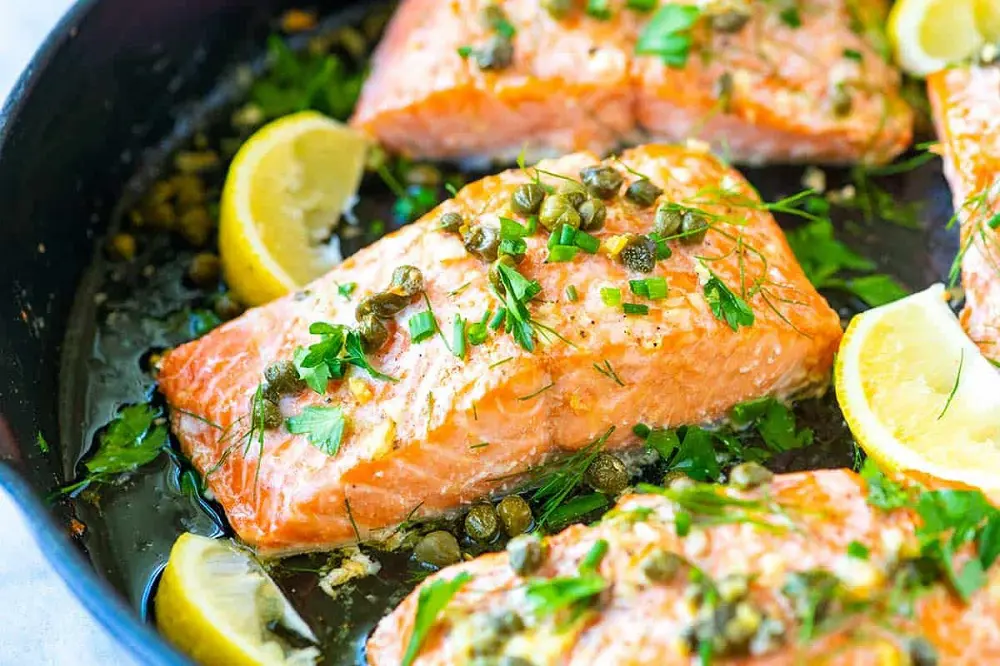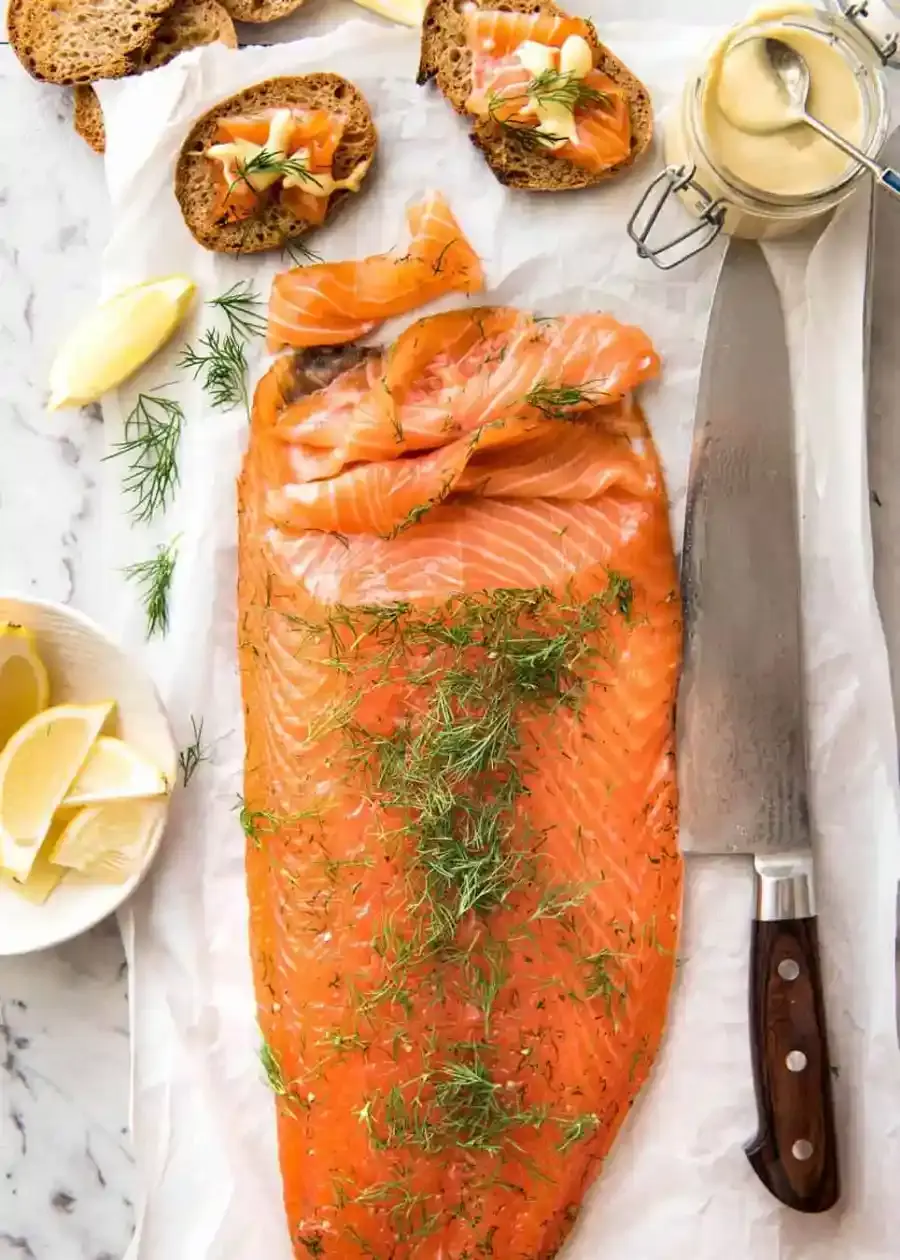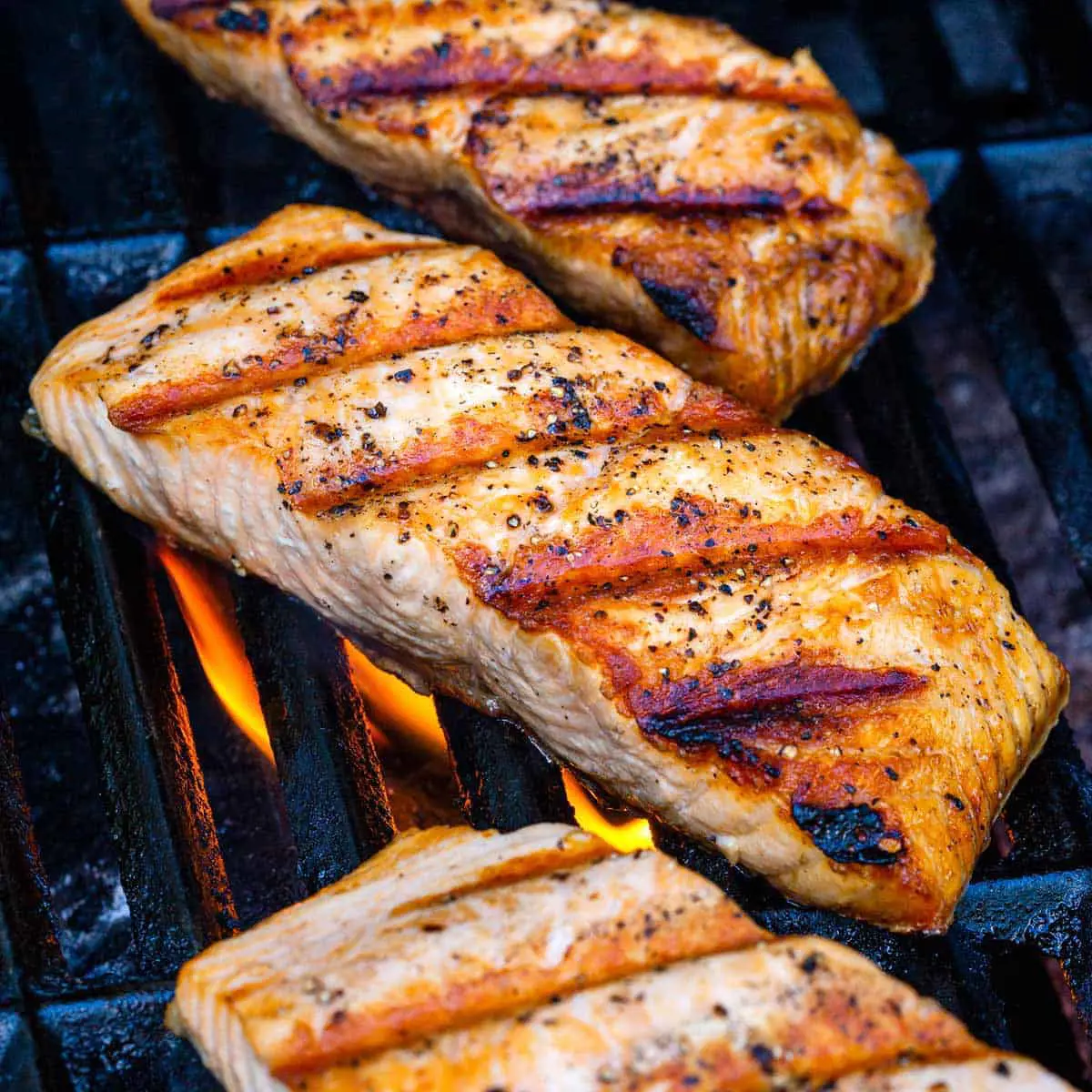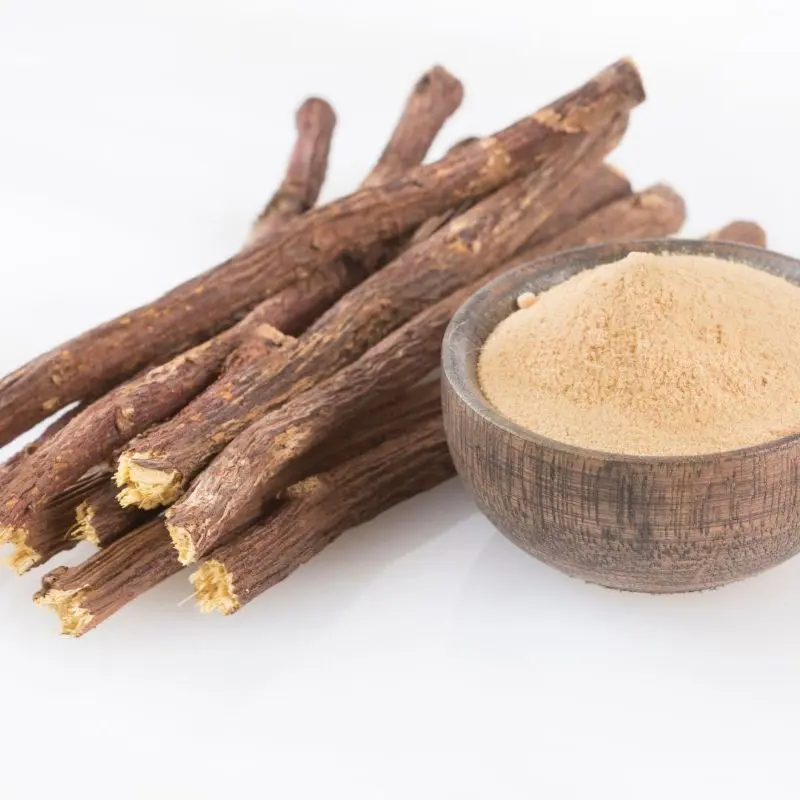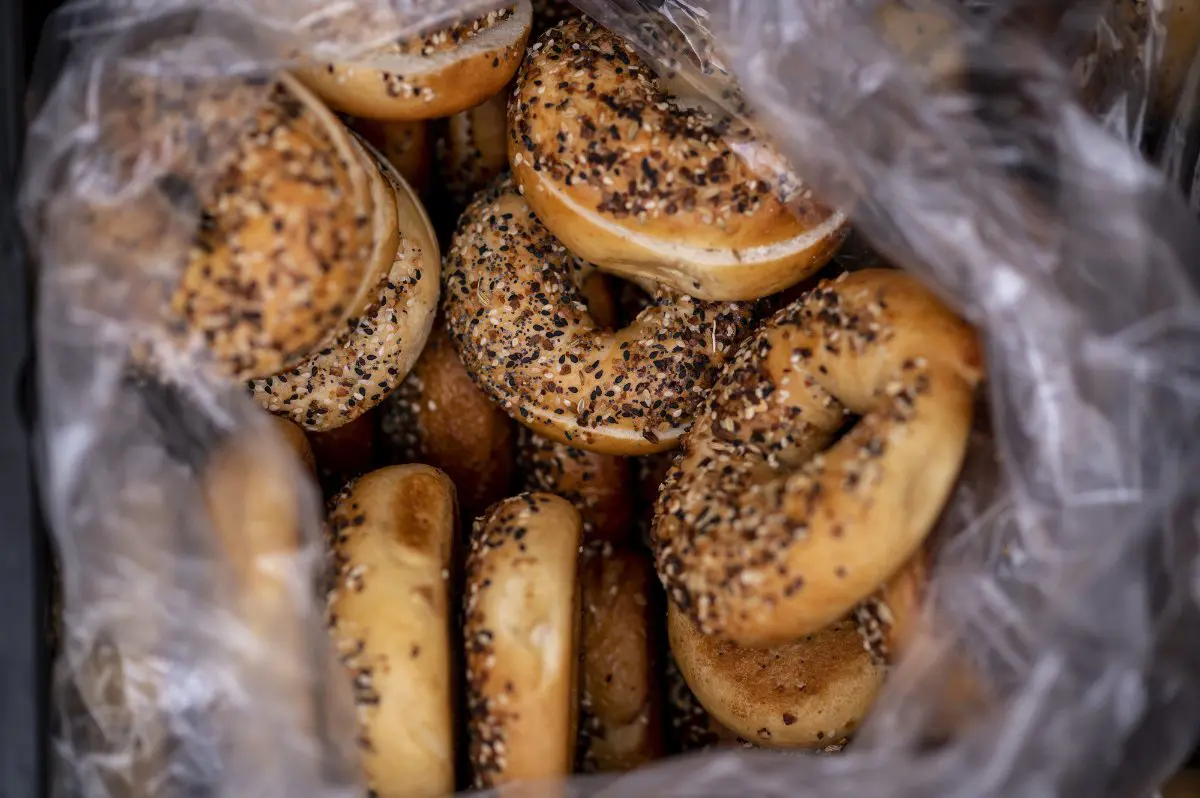How To Cook Prime Rib (Easy Steps and Tips)
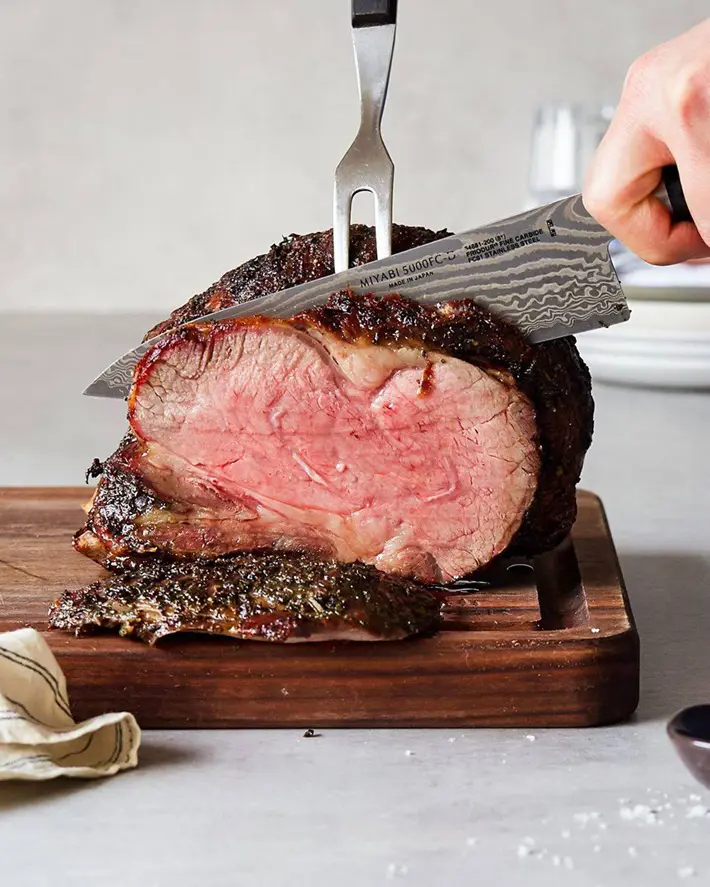
Prime rib is a fine cut of meat characterized by its marbling and tenderness. It can be prepared via multiple cooking techniques. This dish is fit for any holiday occasion or a sophisticated dinner because it matches many side dishes and sauces.
Whether someone wants only salt and pepper for its seasoning or prefers adding herbal spices together with garlic cloves, preparing rib roast therein is simple and gives pleasing results at all times. Learn in this article all about making a juicy delicious prime rib that is going to impress all your guests.
How to Prepare Prime Rib for Cooking?
Selecting and preparing prime rib begins with choosing the right cut. A well-marbled roast is a good choice because such fat distribution means flavor and tenderness. You may select either bone-in or boneless roast, with bone-in having more flavor than other types of meat.
In terms of grading, “Prime” has more marbling as compared to “Choice” which works for budget-friendly people.
Before cooking, trim excess fat, leaving about 1/4 inch for flavor. This helps in even cooking especially if it is bone-in.
Generously season with salt, pepper, and optional herbs e.g. rosemary/garlic, allowing other flavors to infiltrate for at least 1 hour. For even cooking purposes always bring the roast to room temperature; this way you can achieve juicy tender outcomes every time.
Things Needed to Cook Prime Rib
The selection of right ingredients and using appropriate tools are essential in achieving excellence in prime rib preparation. This age-old dish is famous for its rich taste and soft consistency, making it a favorite during celebrations.
If you follow some guidelines below, your prime rib will come out so nice that it will have a crispy layer on outside and juicy inside.
Ingredients:
Prime Rib Roast:
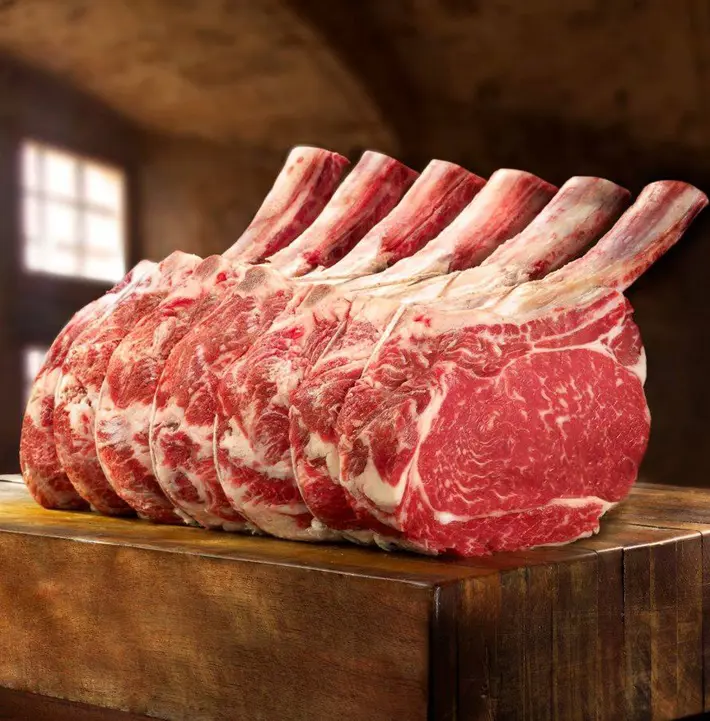
Prime rib roast is a large cut of beef that is characterized by its marbling and is well known for its rich taste and tenderness. Bone-in prime rib roasts are tastier than boneless were you to be asked to choose.
The reason why you should choose well-marbled ones is that they are juicy and flavorful all through their cooking period.
Kosher Salt:
For seasoning the prime rib, kosher salt is crucial because it enhances its inherent flavors. The size of the crystals allows for even distribution on different surfaces, besides allowing the salt to penetrate deeply into the muscle fibers when rubbed into them beforehand.
Freshly Ground Black Pepper:
The prime rib has a hint of spiciness and deep flavor from black pepper. Coarse powdered black pepper gives an accent to beef’s richness while pre-ground varieties may lose their aromatic oils causing them to taste flat in comparison to freshly ground pepper.
Herbs (Rosemary, Thyme):
Fresh herbs such as rosemary and thyme add an earthy smell to the prime rib giving the dish have more robust flavor. These herbs can be chopped and mixed together into butter or oil ahead of rubbing on the surface of meat before cooking it.
They assist in creating a tasty skin as well as augmenting its overall taste thereby resulting in aromatic and complex meals.
Garlic:
Garlic is a common addition to prime rib seasoning because of its aromatic savory flavor that seeps into the meat. Whether it’s minced or powdered, it’s able to tickle your tongue as it brings out the sweetness in beef, making their taste contrast with each other.
Safely stirred with other spices and herbs, garlic also makes a crust that bursts with flavor.
Herbs (Rosemary, Thyme):
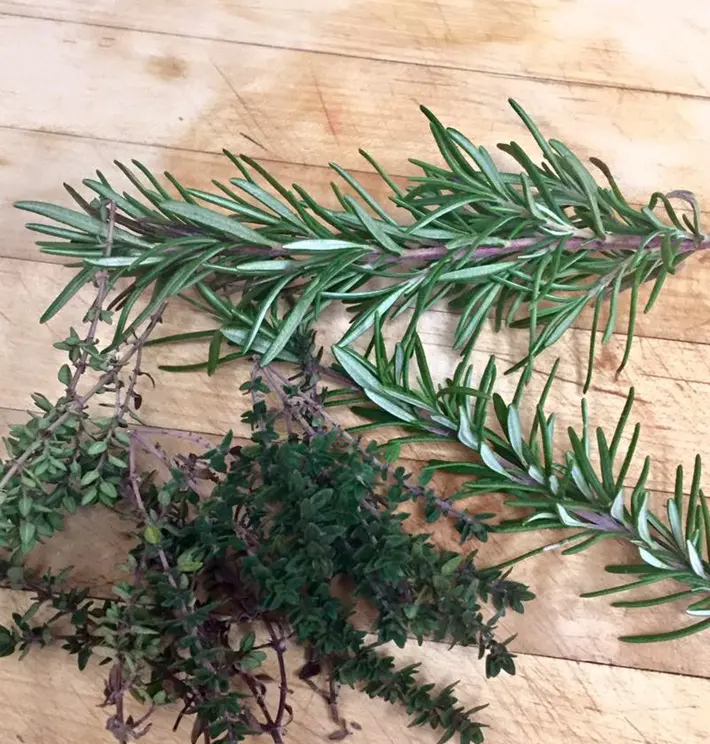
Fresh herbs such as rosemary and thyme add an earthy smell to the prime rib giving the dish have more robust flavor. These herbs can be chopped and mixed into butter or oil ahead of rubbing on the surface of meat before cooking it.
They assist in creating a tasty skin as well as augmenting its overall taste thereby resulting in aromatic and complex meals.
Tools Required
To cook prime rib to perfection, you'll need a few essential tools:
- Oven: An oven is an essential tool for roasting a prime rib. It will offer you a delicious crust and soft inside meat.
- Roasting pan with rack: It is intended to elevate the meat to facilitate even circulation of heat and prevent it from sitting in its juice.
- Meat thermometer: This device is also critical in helping one monitor the internal temperature accurately to have the desired doneness of the prime rib roast.
- Sharp knife: It helps in trimming excess fat and cutting off pieces of prime rib after cooking is done.
- Cutting board: For resting your raw roast while preparing all cuts on top before cooking it and then serving it after slicing it into pieces.
- Kitchen twine: This comes in handy when you need to secure your roast together, particularly if there are bones present that would make it more difficult during preparation.
- Aluminum foil: You can use it to tend the roast while it rests, helping to keep it warm and allowing the juices to redistribute.
How to Cook Prime Rib in the Oven?
Ingredient Measurements:
- 1 prime rib roast (bone-in or boneless, about 4-6 pounds)
- Kosher salt
- Freshly ground black pepper
- 4-5 cloves garlic, minced (or 1-2 teaspoons garlic powder)
- Fresh herbs like rosemary and thyme
- Olive oil or softened butter.
Instructions:
1. Prepare the Roast
- Start by unwrapping the prime rib and then drying it with paper towels. This is important because it’s the way that seasoning adheres best to meat.
- Let your prime rib sit at room temperature for around 2 hours. This gives room for even cooking all through the roast
- While your meat rests, prepare your roasting apparatus by getting a rack. When you raise the roast, heat circulates evenly and avoids juice stagnation
- If you wish, shave off excess fat from the roast to leave a flavor-enhancing 1/4 inch behind. If too much fat is kept while still tasting great, trimming avoids such fatty finishes.
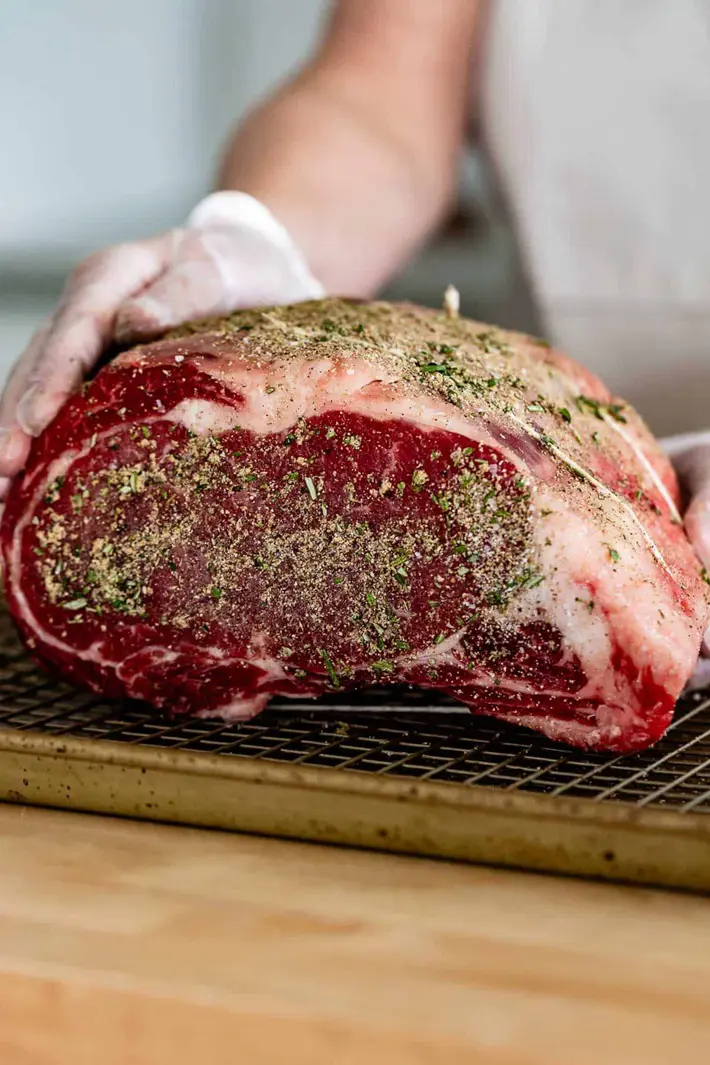
2. Season the Roast
- The flavor train starts with seasoning. Cover the whole roast in kosher salt as well as freshly ground black pepper abundantly. Don’t hold back, make certain that each area of the meat is completely covered.
- For additional richness, spread minced garlic or garlic powder on every side of the roast. Massage the garlic into the meat with your fingertips and make sure it gets in there so that it can be tastier.
- If herbs are to be used alongside, mix them with olive oil or soft butter. This herb combination should be rubbed all over the roast giving rise to a savory crust when roasted.
3. Preheat the Oven
- Set your oven to a high temperature of 450°F (230°C). It is necessary to have a high temperature so that it can make the outside of the roast very hot which will in turn create a very nice crust.
- Make sure the oven has been preheated completely before placing your roast inside it. A well heated oven would help the meat cook from the beginning at an optimal rate.
4. Roast the Meat
- Put the seared roast on a grill inside a roasting dish, fat side towards the sky. The rack raises the meat to enable air circulation which prevents it from being immersed in its fluid.
- Insert the thermometer into the thickest sections of the beef without touching any bone. This way you can keep an eye on how hot it gets inside and determine when it’s just right.
- To make a delicious, rich crust roast for 15-20 minutes at 450 F (230 C). The initial high temperature prevents juices from escaping and gives a visual appeal as well.
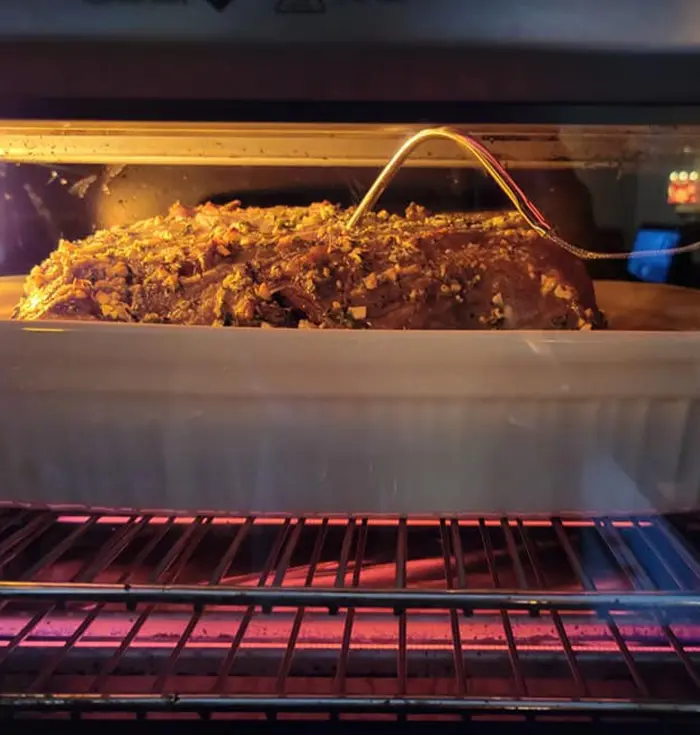
5. Lower the Temperature
- Once you have seared the meat, lower your oven to 325°F (160°C). This low temperature helps to cook the roast slowly and evenly, allowing for a juicy inside that has a good looking crust at its top.
- Keep roasting until the center of the meat gets to a temperature that you want it cooked. In case you want it rare then aim for 120°F (49°C), while if medium rare try out 130°F (54°c), and when aiming for medium go for 140°F (60°c). It’s important during this step to make sure that it is cooked in a way that meets your preference for doneness.
- Check the meat thermometer regularly. Aiming at your target takes close monitoring of temperature as well to avoid overcooking.
6. Rest the Roast
- As soon as your internal temperature for prime rib has been met, take it out of the oven. This way you stop it from overdoing further cooking and maintain its moisture.
- Put on a blanket with some aluminum foil loosely; leave for around 20-30 minutes. Resting is crucial because this allows juices to travel back into muscle curing making meat more tender and delicious than ever before.
7. Carve and Serve
- Once you’re done resting, take off the aluminum foil. The foil kept the warmth in and let the juices flow back into the beef.
- With a sharp knife, slice a prime rib into thick ones. Every slice is made tender and easy to swallow by cutting along the grain.
- Serve with your favorite side dishes right away. It is best to serve it immediately after cutting as it will taste juicier and more flavorful at that time.
- In addition, you can add either horseradish sauce or any other preferred supplementary foods.
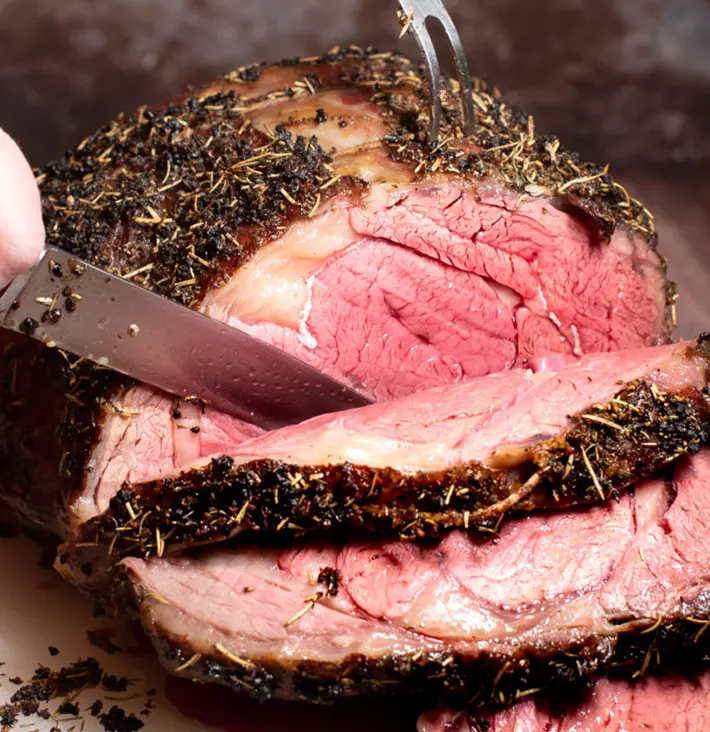
What Temperature To Cook a Prime Rib
Prime rib has an ideal cooking temperature of 325°F (160°C) following an initial sear at high temperatures of 450°F (230°C). This technique produces a flavorful crust while permitting slow heating and even cooking within; as a result, it is tender and succulent.
Nonetheless, suitable temperatures can change depending on factors such as size and personal preference. For instance, if your preference is for rare or medium-rare prime ribs then maintaining a low temperature at 325°F (160°C) after searing would be perfect.
On the other hand, those who want their meat cooked to medium or medium well might have to consider slightly increasing their cooking time to attain the required doneness level inside.
How Long Does It Take To Cook Prime Rib
The cooking duration of prime ribs relies on many factors. The size of the meat is one big factor, for instance, a 4-6 pound prime rib roast would normally need about 1.5 - 2.5 hours to be cooked at 325°F (160°C) after the initial high-heat searing.
Moreover, temperature plays an important role in the oven starting with the initial sear done at 450°F (230°C) thereby developing a tasty crust then reducing the heat so that it cooks slowly but evenly throughout its entire length.
In addition to this, the required level of doneness is crucial. For instance, if it were medium rare that would mean an internal meat temperature of 130°F (54°C) which could be confirmed by use of a meat thermometer.
What Color Is a Cooked Prime Rib

A prime rib that is cooked to perfection has a pinkish or rosy-red center, depending on how done it is. It should have a rich deep brown exterior crust from the roasting process that makes it very appetizing.
For instance, when the prime rib is cooked to the ideal internal temperature of 130◦F (54◦C) for those who love medium-rare meat and also allowed to rest, it will maintain an alluring pink in the inside.
This is what makes prime rib so great; the perfect roast should always be juicy and tender with this color. If the center appears more greyish or brownish, then maybe you did overcook it which could result in dryness and not much taste at all.
Tips For Perfection
Here are some tips to help you achieve perfection when cooking prime rib in the oven:
- Pick Out The Best Meat: A prime rib roast is a piece of meat that has better marbling and, in case you can find it, gets a "Prime" grade because it has the best flavor and tenderness. Bone-in roasts are often more flavorful.
- Season Properly: Rub kosher salt, freshly ground pepper, minced garlic, and herbs like rosemary or thyme all over prime rib cuts liberally before cooking them to enhance taste and give them that nice crusty outside.
- Use Meat Thermometer:
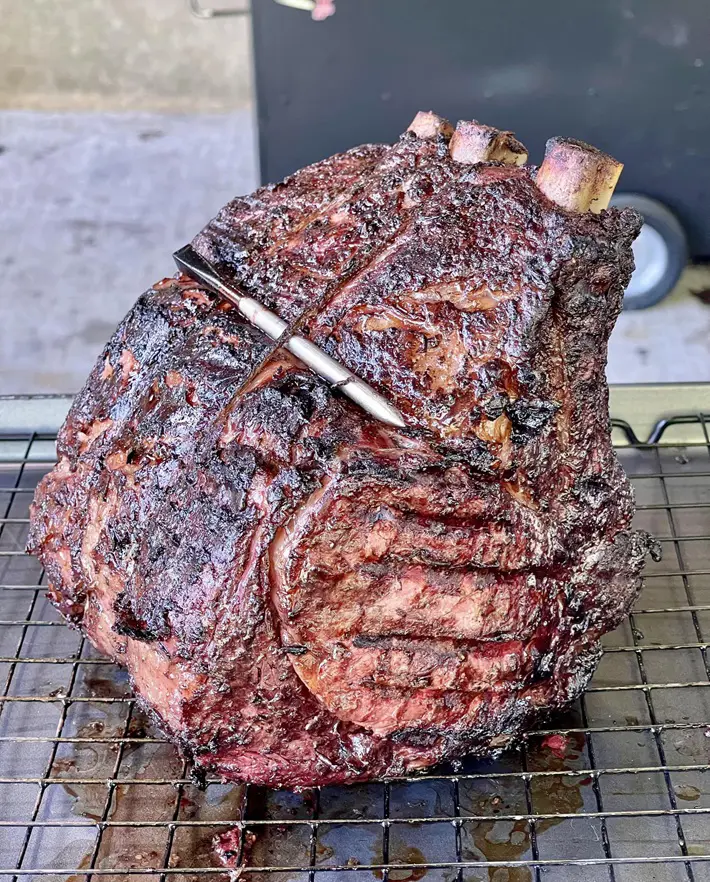
Source : facebook - It is advisable to use a meat thermometer when cooking to know when your prime rib will be done according to your preference. The internal temperature should be around 130°F (54°C) for medium rare on an 8-inch cut.
- Let It Rest: A 20-30 minute period of resting after taking it out from the oven is essential for allowing redistribution of juices hence resulting into the tenderising of meat.
- Begin with High Temperature: To make a flavorful crust roast at 450°F (230°C) during the first 15‐20 minutes then reduce heat down to 325°F (160°C) for uniform completion.
- Avoid Overcooking: Keep track of internal temperatures, particularly when cooking it at the end, so that it does not lose its juices or get dried out.
- Consider adding fresh herbs and garlic: When combined with olive oil or melted butter, rubbing herbs and garlic into a roast gives it rich flavors.
Serving Suggestions
Here are some serving suggestions for cooking prime rib:
Along with Traditional Sides: Serve prime rib along with usual sides such as mashed potatoes, roasted vegetables, and Yorkshire pudding. These traditional accompaniments go well with the rich flavors of prime rib and will make you feel satisfied after eating.
With Au Jus Sauce: Drizzle or serve prime rib with an au jus that’s made from the drippings on the pan. Hence, it enhances its taste while adding moisture to each slice.
On a Platter: Carve the prime rib and arrange slices on a serving platter. For a decorative yet appetizing presentation, garnish with fresh herbs like rosemary or thyme.
In Sandwiches: Use any leftover prime ribs to create sumptuous sandwiches. Add some horseradish sauce, caramelized onion, and USA-raised arugula for an irresistible sandwich umami-jet Japanese at its best.
With Horseradish Sauce: The main course pairs well with this creamy horseradish sauce created particularly to bolt up the high protein dish. Their chances are slim for those who think it cannot be better than matching tastes since the sourness brings balance to richness.
With Red Wine:
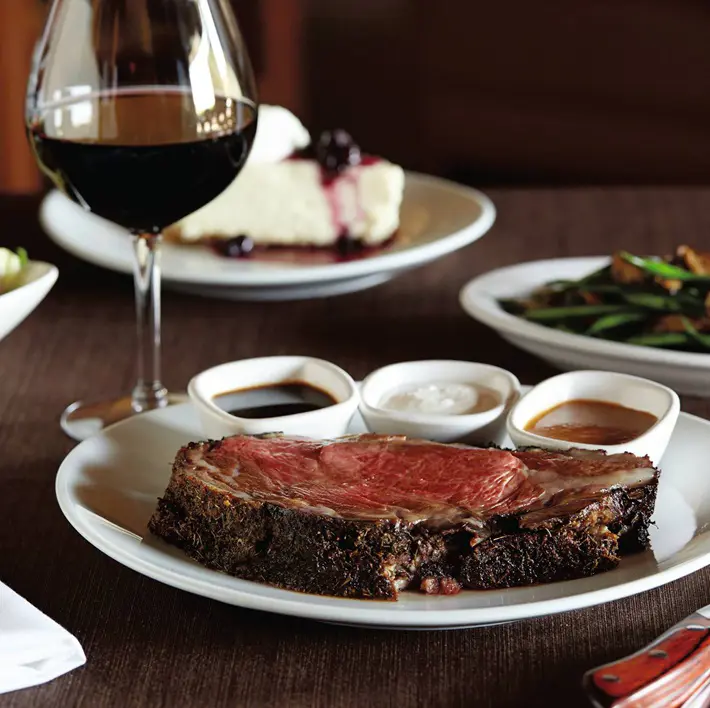
Serving prime rib alongside a powerful red wine such as Cabernet Sauvignon or Merlot is perfect -the deep flavor complements the sumptuousness of this famous beef cut.
As Main Course: Make it a classic for festive dinners steamed into spinach cream garlic mashed potatoes and crisp green salad.
Recent posts
Recipe
Recipe
Garlic Butter Salmon Recipe
Garlic butter salmon is not only a culinary delight but also a nutritional powerhouse, offering a delectable blend of flavors and numerous health benefits. This dish combines the rich taste of salmon with the aromatic and savory notes of garlic ...
Recipe
A Comprehensive Guide To Perfect Salmon Gravlax
Salmon gravlax is a luxurious, flavorful dish that captures the essence of Scandinavian culinary tradition. This delicacy, made by curing salmon with a mixture of salt, sugar, and dill, is surprisingly easy to prepare at home. In this comprehensive g...
Recipe
14 Grilled Salmon Recipes For Perfect Summer Dinner
Salmon is possibly the most reliable dinner option for many households throughout America. So, we are confident that you already have an array of salmon-baked recipes on your corner. What we have brought for you today are grilled salmon recipes so yo...
Recipe
Best Smoked Salmon Appetizer Recipe
Smoked salmon appetizers are a timeless and elegant choice for any gathering. These offer a perfect balance of rich, smoky flavors and fresh, vibrant ingredients. These have become synonymous with casual brunches as well as upscale gatherings because...
Recipe
The Ultimate Guide To Perfectly Crispy Skin Salmon
Salmon, renowned for its rich flavor and numerous health benefits, is a favorite in many kitchens. One of the most coveted ways to prepare this fish is with a perfectly crispy skin. Achieving that golden, crunchy exterior while maintaining tender, ju...
Recipe
Nourishing Meals You Can Make With Canned Salmon
Prepare to be pleasantly surprised if you've yet to delve into the world of canned salmon. These recipes offer a convenient alternative to cooking a salmon filet, and they're budget-friendly too. Explore our curated list of 15 top canned salmon recip...
